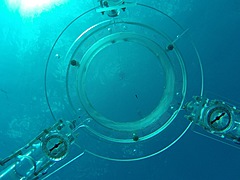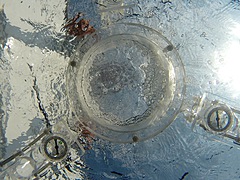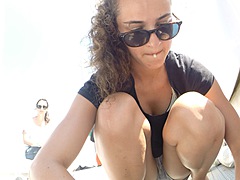DISCing again!
by Jean-Olivier Irisson, on
Last year's research goal was to observe the orientation and swimming behaviour of fish larvae in the Mediterranean Sea, for the first time. We concluded that the species we observed had significant oriented swimming abilities which could influence their trajectory in the ocean. They are not just transported by currents. These findings are now written in two scientific articles, one in press and another one under review.
This year, we are DISC'ing (and swimming) again! Thanks to the help of Julie Lafaye who came here for a one month internship, we measured the swimming speeds of Diplodus annularis and observed the orientation behaviour of Chromis chromis. The first goal is to check the repeatability of the results we found last year. But we also noticed important differences between individuals, in the same species. Some larvae would only swim at 5 cm/s while others would reach 25 cm/s. This year's goal is therefore to try to understand the source of these differences. For this purpose, we preserve the fish in a way that will allow us to measure their fat reserves, their symmetry, their body mass index, etc. All those indexes could be correlated with differences in individual performance.
Because we want to assess individual differences, with lots of inter-individual variations, we need a large number of observations to conclude so the exploitation of this data will continue over a few months at least. But thanks to Julie's efficiency we are on to a good start!
The DISC's camera captured many pictures of Chromis larvae but also a few more "artistic" ones. And no, Julie is not sticking her tongue out on the last picture; that's the waterproof paper label for the fish under study that she is holding in her mouth!


